Our online equipment poll of more than 5,000 Aussie golfers via our partners at Drummond Golf provides an intriguing insight into your playing preferences.
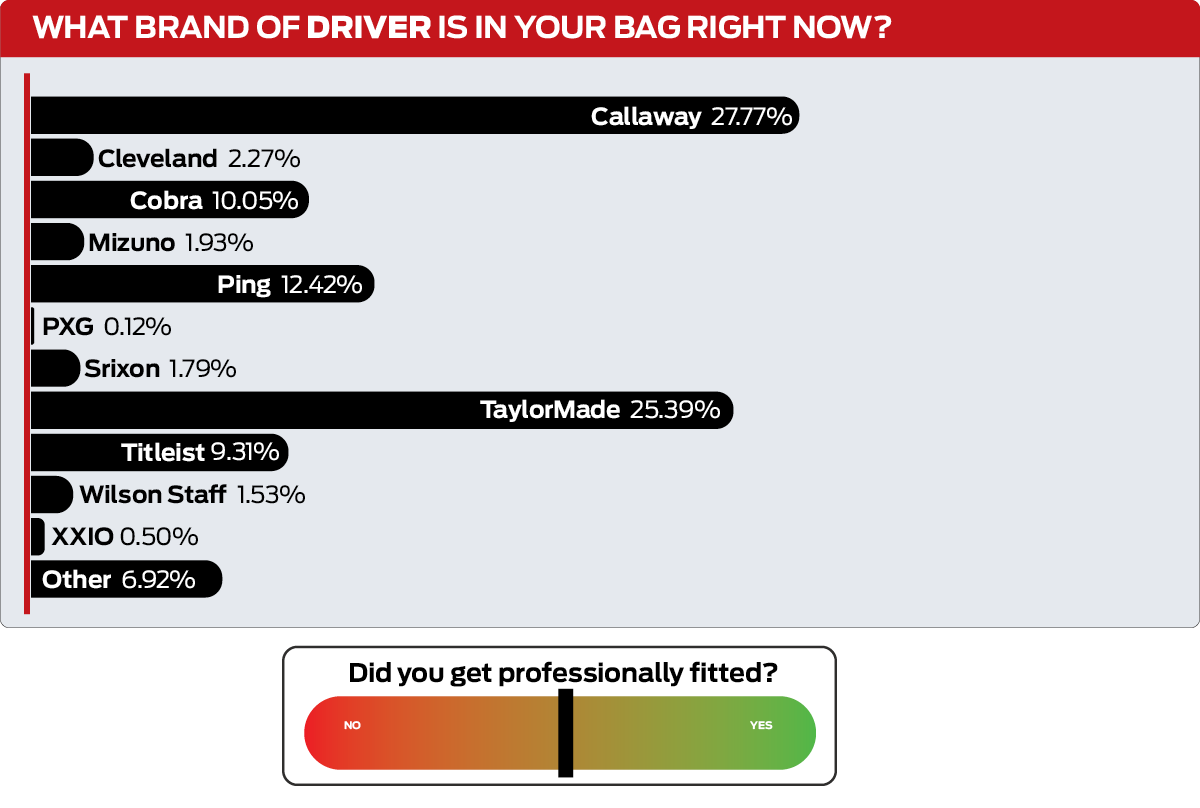
According to you, Callaway and TaylorMade account for more than half of the drivers being used in Australia today. But only 52 percent of you are getting fitted – not good enough, according to Callaway Golf South Pacific managing director Matt Meredith. “We strongly encourage players to be custom-fit for their driver as it is such an important club and generally one of the most difficult to hit, being the longest shaft and lowest loft.”
 A mirror image of the driver category and not surprising given the best fairway woods now combine hot faces and ultra-low weighting to maximise driver-like distance. But don’t fall into the trap of swinging it like a driver. Remember Aussie Cameron Smith’s No.1 rule: “Pretend you’re swinging a wedge. This gets you to slow down – you rarely put extra effort into a wedge shot – and it syncs your body motion to the swinging of your arms and club.”
A mirror image of the driver category and not surprising given the best fairway woods now combine hot faces and ultra-low weighting to maximise driver-like distance. But don’t fall into the trap of swinging it like a driver. Remember Aussie Cameron Smith’s No.1 rule: “Pretend you’re swinging a wedge. This gets you to slow down – you rarely put extra effort into a wedge shot – and it syncs your body motion to the swinging of your arms and club.”
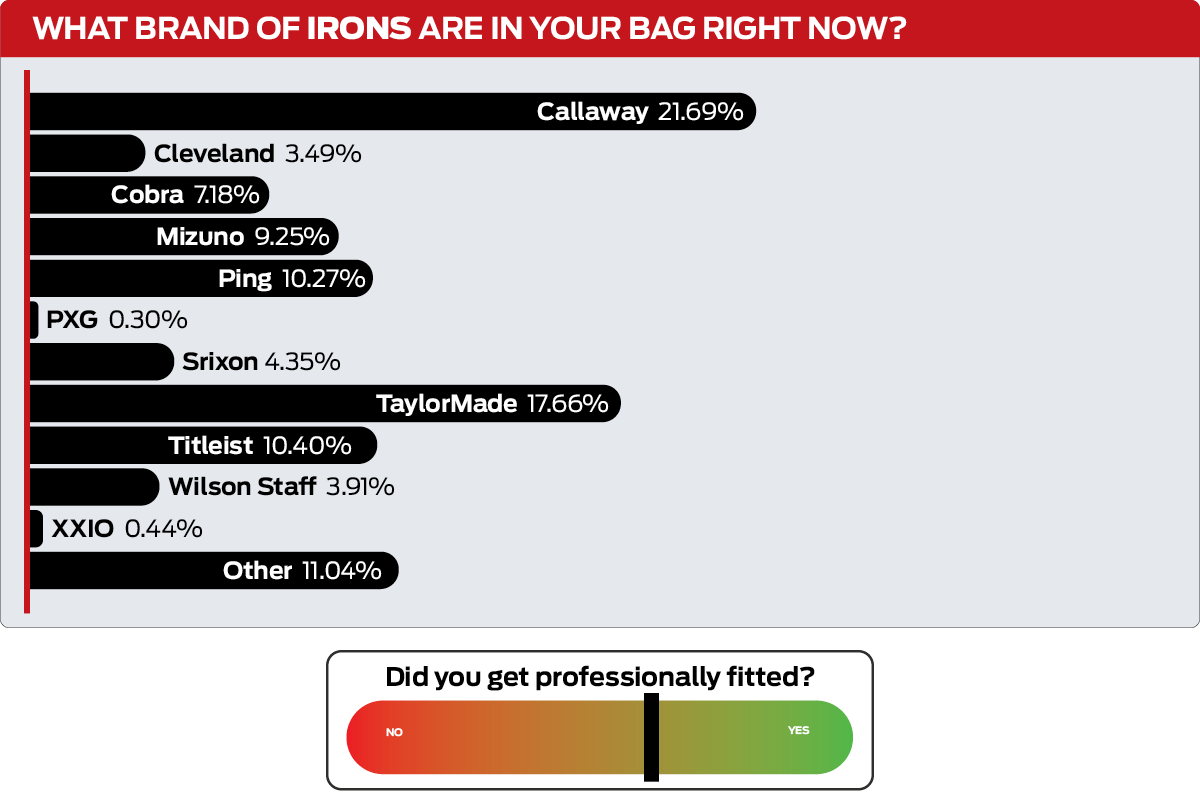 When it comes to purchasing new irons it’s almost impossible to get it wrong in 2020, particularly if you’re getting fitted. “Irons are no longer single pieces of metal,” says Golf Digest gear guru Mike Stachura. “Most combine steel and high-strength alloys with heavy tungsten, shock-absorbing polymers and other elements previously found only in rocket engines and artificial hips.”
When it comes to purchasing new irons it’s almost impossible to get it wrong in 2020, particularly if you’re getting fitted. “Irons are no longer single pieces of metal,” says Golf Digest gear guru Mike Stachura. “Most combine steel and high-strength alloys with heavy tungsten, shock-absorbing polymers and other elements previously found only in rocket engines and artificial hips.”
Yep, it’s a whole new world out there!
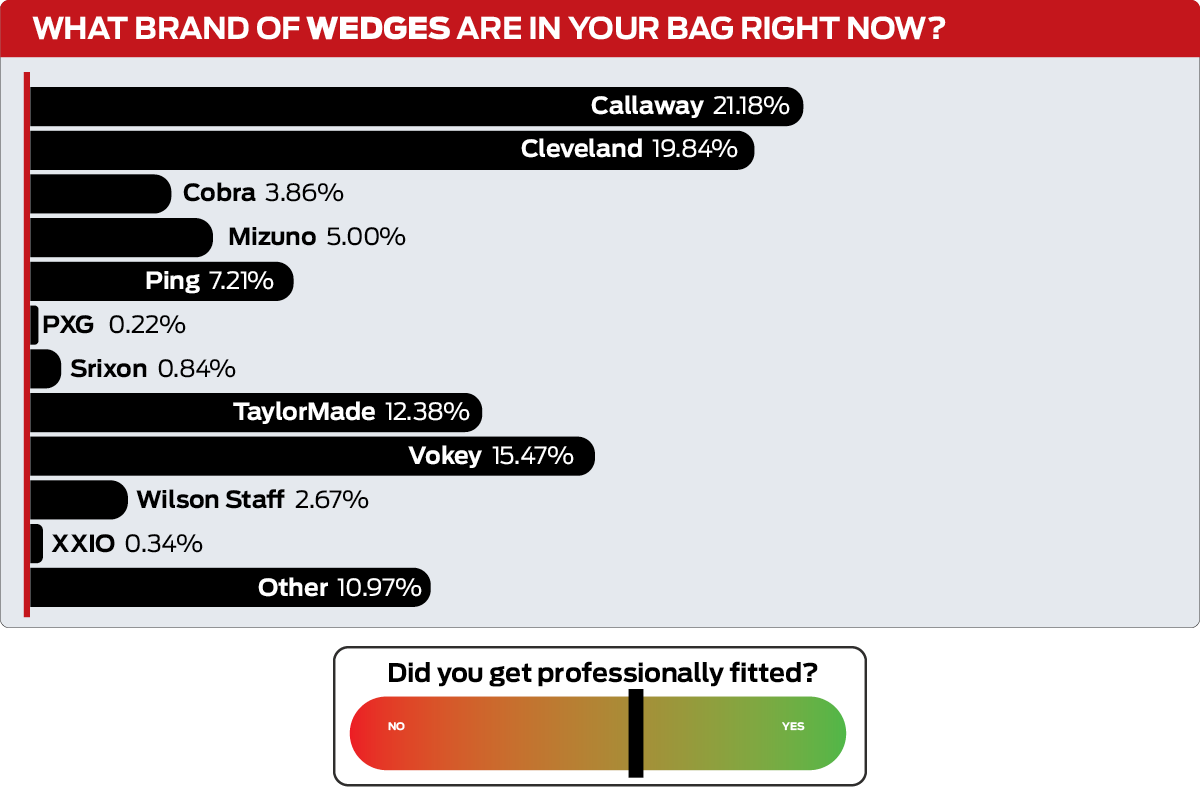
Are your wedges fitted with the wrong shafts? Titleist shared specs from Jordan Spieth’s wedge setup, and we found that his 46 and 52-degree wedges use the same shafts that are in his irons, Project X 6.5. However, his 56 and 60-degree wedges have a sub-flex shaft, which can add feel. Take a page out of his playbook and try using your iron shafts in your lower-lofted wedges. After all, you probably use them as full-swing clubs more.
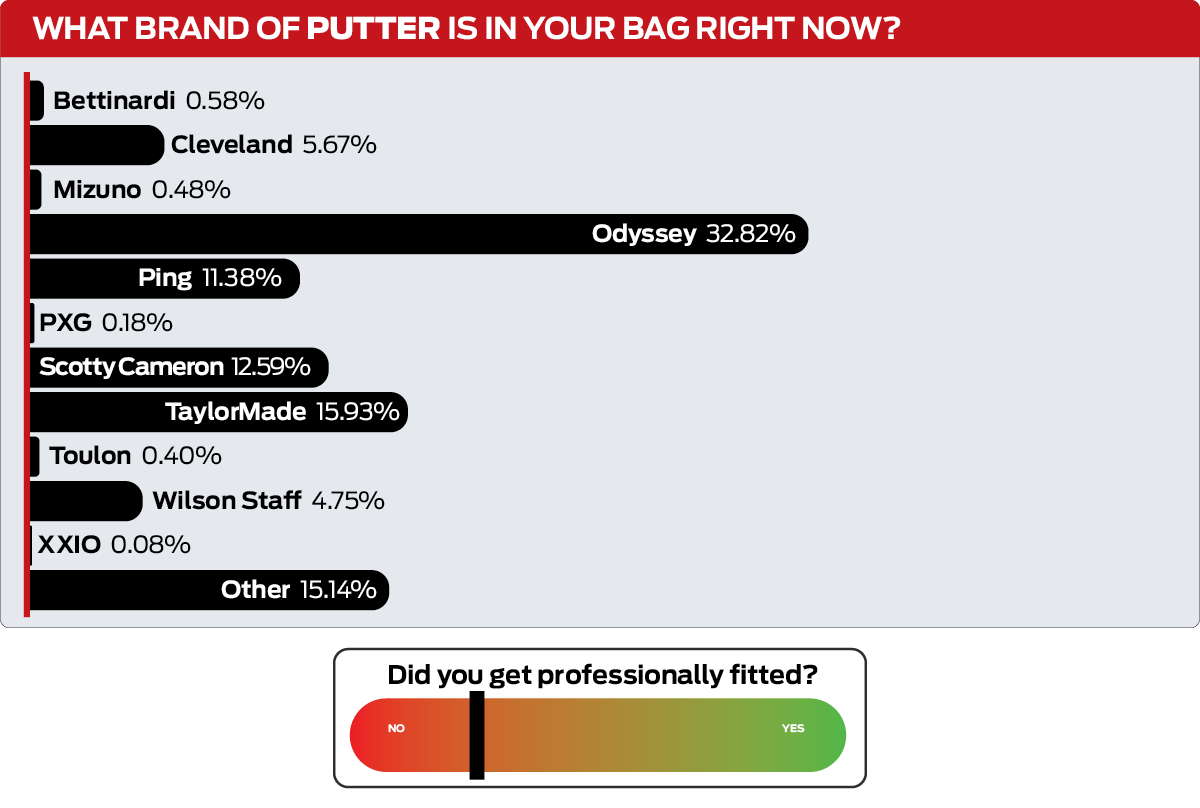 Nearly 40 percent of PGA Tour players use mallet putters, while only about a third used one back in 2014. It seems that more players are seeking the forgiveness benefits of mallet putters. Your putting stroke is generally your most repeatable, so that makes it the easiest to analyse, and sometimes the recommended changes (length, lie angle, grip) don’t require a putter change. Whatever you choose, get the data and resist the urge to buy off the rack.
Nearly 40 percent of PGA Tour players use mallet putters, while only about a third used one back in 2014. It seems that more players are seeking the forgiveness benefits of mallet putters. Your putting stroke is generally your most repeatable, so that makes it the easiest to analyse, and sometimes the recommended changes (length, lie angle, grip) don’t require a putter change. Whatever you choose, get the data and resist the urge to buy off the rack.
 The biggest shock of the entire survey and we’re not talking about the leading brands. The fact that only 5 percent of those surveyed got fitted for their ball is a big no-no, according to Titleist’s director of club fitting, Brett Porath: “Golf ball fitting and golf club fitting are absolutely intertwined. When analysing launch monitor results you will get very precise spins rates and launch angles – exactly like you will experience on the golf course.”
The biggest shock of the entire survey and we’re not talking about the leading brands. The fact that only 5 percent of those surveyed got fitted for their ball is a big no-no, according to Titleist’s director of club fitting, Brett Porath: “Golf ball fitting and golf club fitting are absolutely intertwined. When analysing launch monitor results you will get very precise spins rates and launch angles – exactly like you will experience on the golf course.”
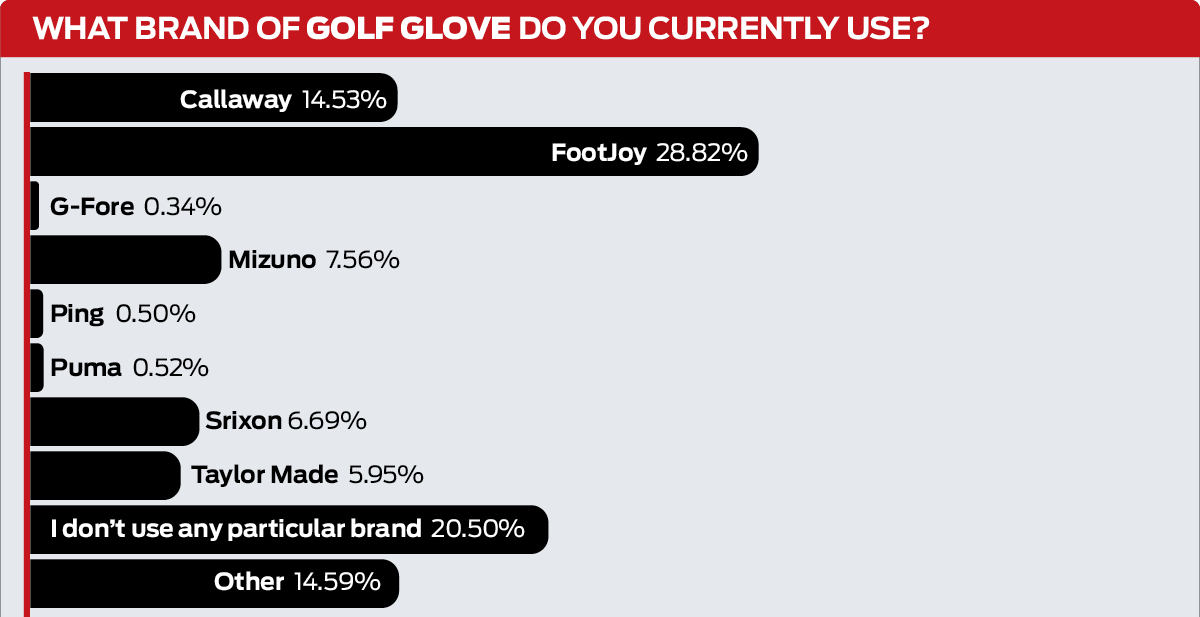 A properly-fit glove is as important to your game as using the right club or golf ball, says FootJoy marketing manager for Acushnet Australia, Tim Snow. “About 50 percent of golfers are estimated to be wearing the wrong glove size,” he says. “Most are wearing a glove that is too big. Your glove is the closest point of contact with your club; it should fit like a second skin.” Australia’s Masters hero Adam Scott concurs: “All the feel in your golf club is coming through your hands. So if you’ve got to have a glove on, you need the one with the best feel.”
A properly-fit glove is as important to your game as using the right club or golf ball, says FootJoy marketing manager for Acushnet Australia, Tim Snow. “About 50 percent of golfers are estimated to be wearing the wrong glove size,” he says. “Most are wearing a glove that is too big. Your glove is the closest point of contact with your club; it should fit like a second skin.” Australia’s Masters hero Adam Scott concurs: “All the feel in your golf club is coming through your hands. So if you’ve got to have a glove on, you need the one with the best feel.”
 Now’s a great time to get a grip. That includes with your golf shoes. If they’re worn-down, they’re easy enough to replace yourself. In fact, most golf retailers offer a cleat pack that also comes with a cleat wrench. In other words, no excuses. By the way, don’t wait for all the cleats to go. Cleats in certain parts of a shoe tend to wear out faster than others. And give them a wash occasionally, will you? Some liquid soap and warm water along with a soft towel or soft bristle brush will get the job done.
Now’s a great time to get a grip. That includes with your golf shoes. If they’re worn-down, they’re easy enough to replace yourself. In fact, most golf retailers offer a cleat pack that also comes with a cleat wrench. In other words, no excuses. By the way, don’t wait for all the cleats to go. Cleats in certain parts of a shoe tend to wear out faster than others. And give them a wash occasionally, will you? Some liquid soap and warm water along with a soft towel or soft bristle brush will get the job done.

You know what sucks? Grabbing your rangefinder on the second hole and getting that flashing light that your battery is dead. Even if your battery isn’t at that level yet, unless you’ve changed it recently do so now. It beats the heck out of guessing at distances, pacing off yardages or looking for that 150 marker and holding up play.
THE TAKEAWAY: There are a few key points to share from our annual equipment poll in what must be said was a significant sample size of 5,046 golfers. Of those who chose to participate, 93 per cent were male golfers, of which 83 percent were active members of a golf club. About 41 percent fell into the handicap range of 10-18, while 86 percent were aged between 25 and 70. The overriding lesson from your feedback was clear: not enough Australian golfers are getting fitted through their entire bag. Global research tells us golfers drop an average of nearly four strokes after a proper fitting. Now who doesn’t want that?




